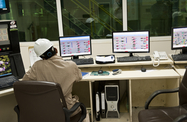
On unlocking the full potential of downstream assets for increased petrochemicals production
How can investments in downstream assets increase local petrochemical outputs?
ABDULLAH AL SAADAN: According to the International Energy Agency, demand for petrochemicals will rise faster than any other segment in the oil industry. Saudi Vision 2030 rightly places a considerable emphasis on this segment. It is imperative that downstream infrastructure is developed and modernised to reap all the potential benefits and unlock value through downstream integration.
Seamless logistics flows and expanding interconnectivity should be given top priority. Investments in common infrastructure such as feedstock, product pipelines and steam would support development of the petrochemicals cluster and drive value addition. The focus is to expand the provision of plug-and-play cluster infrastructure tobenefit most players.
How is Ras Al Khair Industrial City unlocking downstream potential for investors?
AL SAADAN: Ras Al Khair Industrial City is a centre of excellence for the metals and minerals industries. The complex employs the latest technologies, sound design and modern thinking for industrial zones and communities. Private sector industrial opportunities include the downstream phosphate, downstream aluminium, industrial minerals, metal fabrication, energy goods and services, and support sectors. The offshore cluster programme is part of the Ras Al Khair Industrial City’s programme being implemented in collaboration with Saudi Aramco. The associated onshore infrastructure will be facilitated by the RCJY. Opportunities for the private sector abound in all product components, including maintenance, repair and overhaul, offshore support vessels, new shipbuilding and offshore fabrication.
Interest shown by the private sector thus far has been very encouraging. A number of industrial site allocations have already been signed with investors. Some of these investments relate to the manufacture of iron powder-premix products, copper cathodes and other products used in electrochemistry-related industries, including inorganic chemicals such as soda ash, calcium chloride, ammonium nitrate and more. These products are slated for both the domestic and export markets.
What scope is there for public-private partnership (PPP) models?
AL SAADAN: The National Transformation Programme aims to make the Kingdom a global investment powerhouse, and PPPs are a key part of this. There have already been a number of successful build-own-operate and build-own-transfer projects in the Kingdom, mainly in the power, water and transportation sectors under the PPP umbrella. As the largest country by population and area in the GCC, and the fifth-largest state in Asia, the potential for PPP opportunities in Saudi Arabia is immense. The government is currently fine-tuning the laws that will regulate the role of the private sector in terms of partnering with the public sector.
For instance, the RCJY’s creation of Marafiq, a power and water utility company, has been a very successful model that has leveraged existing assets and grown exponentially year-on-year. The RCJY also has its own investment arm that can facilitate participation in PPP projects in many fields including infrastructure, housing, logistics, commercial and support facilities, energy and transport.
To what extent can industrial investors capitalise on low operational costs?
AL SAADAN: Any region revises its prices based on the maturity of its industry and to be in line with global trends. However, it is important to note that despite the recent increase, energy tariffs in the Kingdom are still some of the most competitive in the region.
When investors come to Saudi industrial cities, they are embraced by an industrial ecosystem that guarantees the availability of services and reduces costs. All government bodies are working to achieve maximum integration and clustering in cities, with the aim of reducing capital expenditure and operating costs further for the investor. The government provides start-up loans on attractive terms that include grace periods and longer repayment periods. Such measures will further improve the ease of doing business and eventually lower costs for players.
How does the local raw materials supply chain support manufacturing activities?
AL SAADAN: Pioneers such as Saudi Basic Industries Corporation and Saudi Aramco have already established a robust raw materials supply chain that benefits downstream industries. These firms are now diversifying into niche downstream segments such as specialty chemicals, which we see as a step in the right direction, though we are not complacent. Efforts are being directed towards improving feedstock security for downstream operators through promoting longer-term contracts and the aggregation of demand implying attractive terms of supply. A strong raw material network is certainly a catalyst that paves the way for manufacturing activities to continue and flourish.


